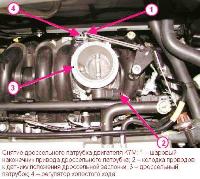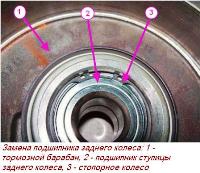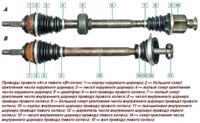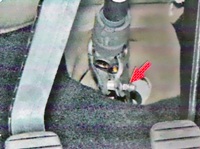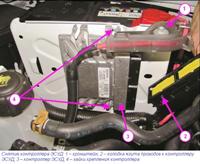When performing work related to the depressurization of the air conditioning system, it is necessary to completely unload the refrigerant, followed by loading the system
Before bleeding the system, you must follow the safety rules and wear goggles
Release the refrigerant from the air conditioning system outdoors or in a well-ventilated area.
The refrigerant at atmospheric pressure turns into a gaseous state.
Discharge refrigerant from the system in a very thin stream.
Bleeding off the refrigerant may splash some of the oil mixed with it.
To protect the engine compartment from contamination, place a cleaning cloth around the service valve.
We prepare the car for work, open the hood
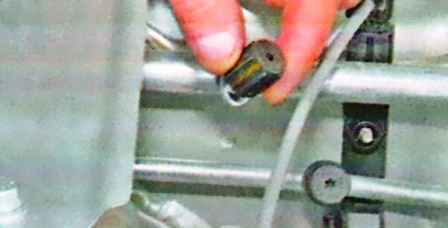
Unscrew the screw cap of any of the two service valves
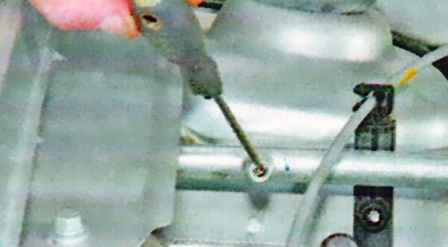
We press with a thin screwdriver with a long sting on the tip of the valve spool and bleed the refrigerant from the system
Before pumping in refrigerant, the air conditioning system must be evacuated
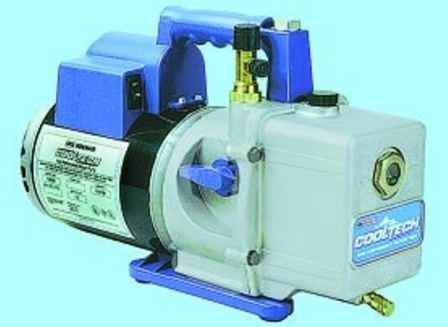
To completely remove air and water vapor from the system, a two-stage vacuum pump should be used
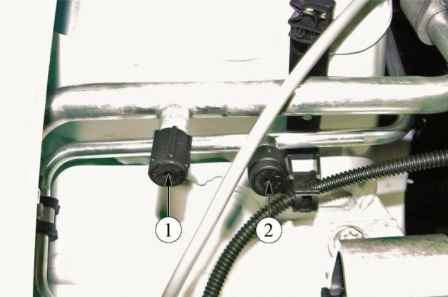
Refrigerant must be charged with the engine off through the high pressure circuit
The mass of refrigerant charged into the system (R134a) is 475 ± 35 g.
If the system is not fully loaded with refrigerant, carry out additional charging with the engine running and the air conditioning system turned on through the low pressure gaseous refrigerant circuit.
Checking the elements of the air conditioning system
Check the elements of the air conditioning system for mechanical damage, replace damaged components.
Checking the condition of the accessory drive belt
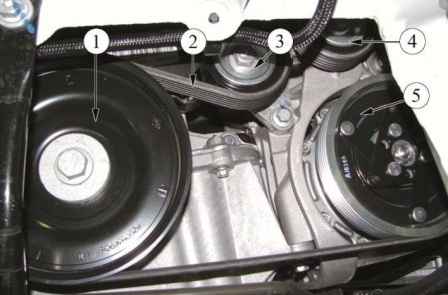
Check the condition of belt 2, accessory drive. The presence of cracks, fraying and delamination of the belt is not allowed.
If necessary, replace the accessory drive belt:
- - turn the automatic tension roller 3 of the auxiliary equipment drive belt clockwise;
- - block roller 3 with a tension hex wrench;
- - remove belt 2 for auxiliary equipment drives;
- - remove tension roller 3 and bypass roller 4;
- - install new tension and bypass rollers;
- - rotate automatic tension roller 3;
- - block roller 3 with a tension hex wrench;
- - install a new belt 2 for auxiliary equipment drives;
- - unlock tension roller 3.
Accessory drive belt removed must be replaced.
When replacing the accessory drive belt, be sure to change the idler and idler pulleys.
Checking the engagement of the compressor electromagnetic clutch
Start the engine and warm it up to operating temperature, turn on the heater fan motor and the air conditioner switch.
If necessary, fix the problem according to TI 3100.25100.12043.
Checking the quantity and condition of the refrigerant in the air conditioning system
Check the amount and condition of the refrigerant in the air conditioning system:
- - connect service hoses to cracks on the pipes of the air conditioning system and open the valves on the ends of the hoses;
- - start and warm up the engine to operating temperature;
- - set the air recirculation mode to the outside air intake position;
- - turn on the heater fan motor and set the maximum rotation speed;
- - open the central and side ventilation nozzles on the panel and set to the neutral position;
- - set the air conditioner switch to the "on" position and turn the temperature control to the "MIN" position;
- - close all windows and doors of the car;
- - ensure constant operation of the engine cooling fan;
- - set the engine crankshaft speed to 2000 rpm;
- - measure the ambient air temperature (T3), after stabilization of the values;
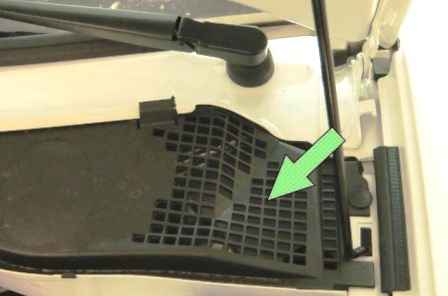

- - wait 5 minutes and measure the air temperature from the left side ventilation nozzle (T1) and the right side ventilation nozzle (T2);
- - after stabilization of the values, determine the temperature difference between T3 and the largest of the T1 or T2 values;
- - determine the difference between T1 and T2.
If the temperature difference between T1 and T2 is greater than 2°C or the temperature difference between T3 and the highest of T1 or T2 is less than 5°C, then the system is faulty and it is necessary to diagnose the air conditioning system
When replacing elements of the air conditioning system, add compressor oil according to the table
Table
The total amount of compressor oil (Sanden SP-10) in the system is 135 ± 10 g.
Operation performed - Amount of oil to be added, ml
Discharging refrigerant - Measure the amount of oil drained and refill with the same amount
Pipeline rupture or major leak - 100
Condenser replacement - Drained oil quantity + 30
Evaporator replacement - Drained oil quantity + 30
Replacing the receiver-dryer - Amount of drained oil + 15
Pipe replacement - Drained oil quantity + 10
Removal and installation of the compressor - Amount of drained oil
Compressor replacement - No oil refill
Replacing the compressor and one or more elements of the air conditioning system - Oil is not topped up
Aggregate replacement of the compressor - Add oil of the specified brand
Integrated replacement of the compressor and one or more elements of the air conditioning system - Add oil of the specified brand







